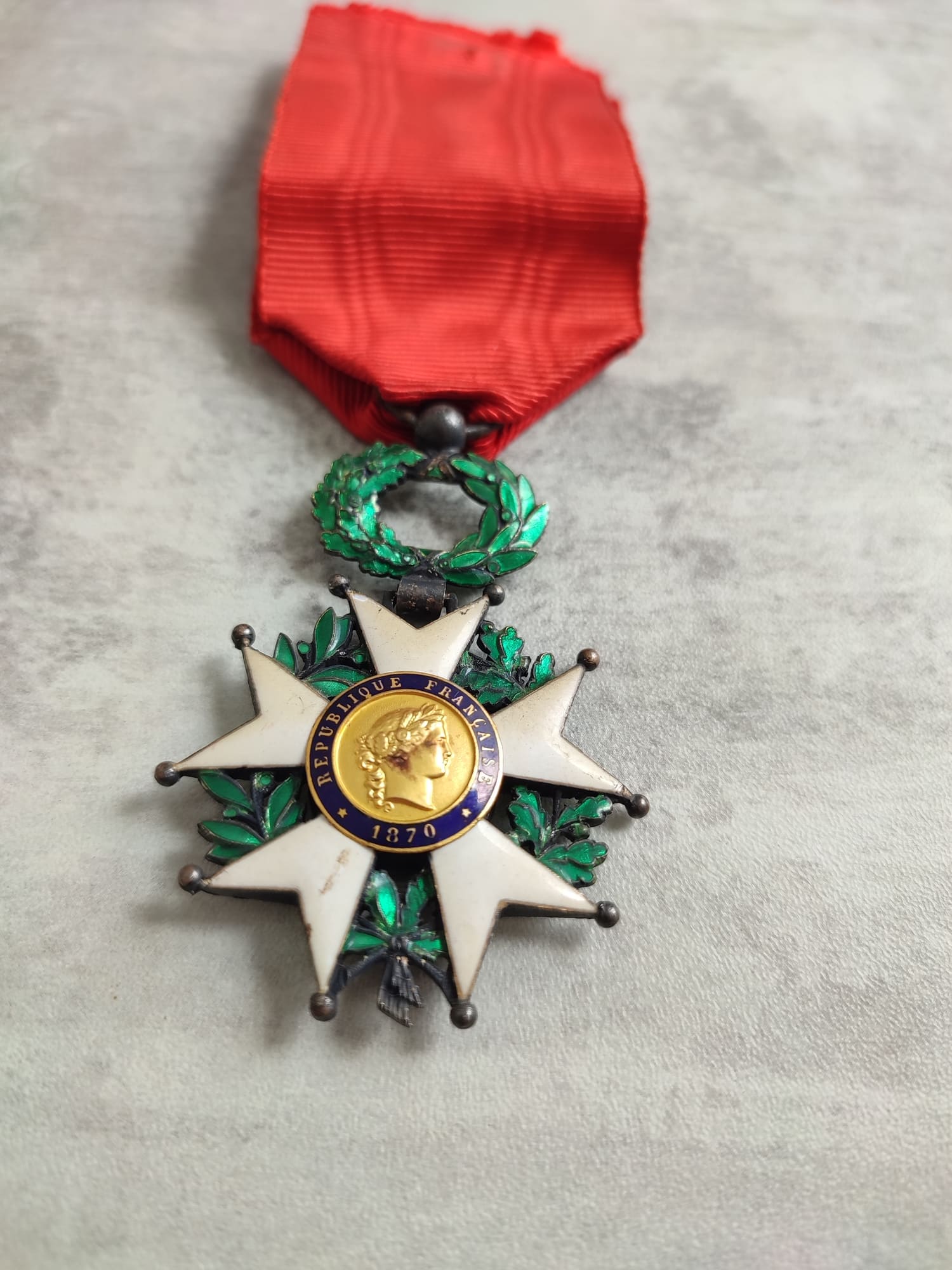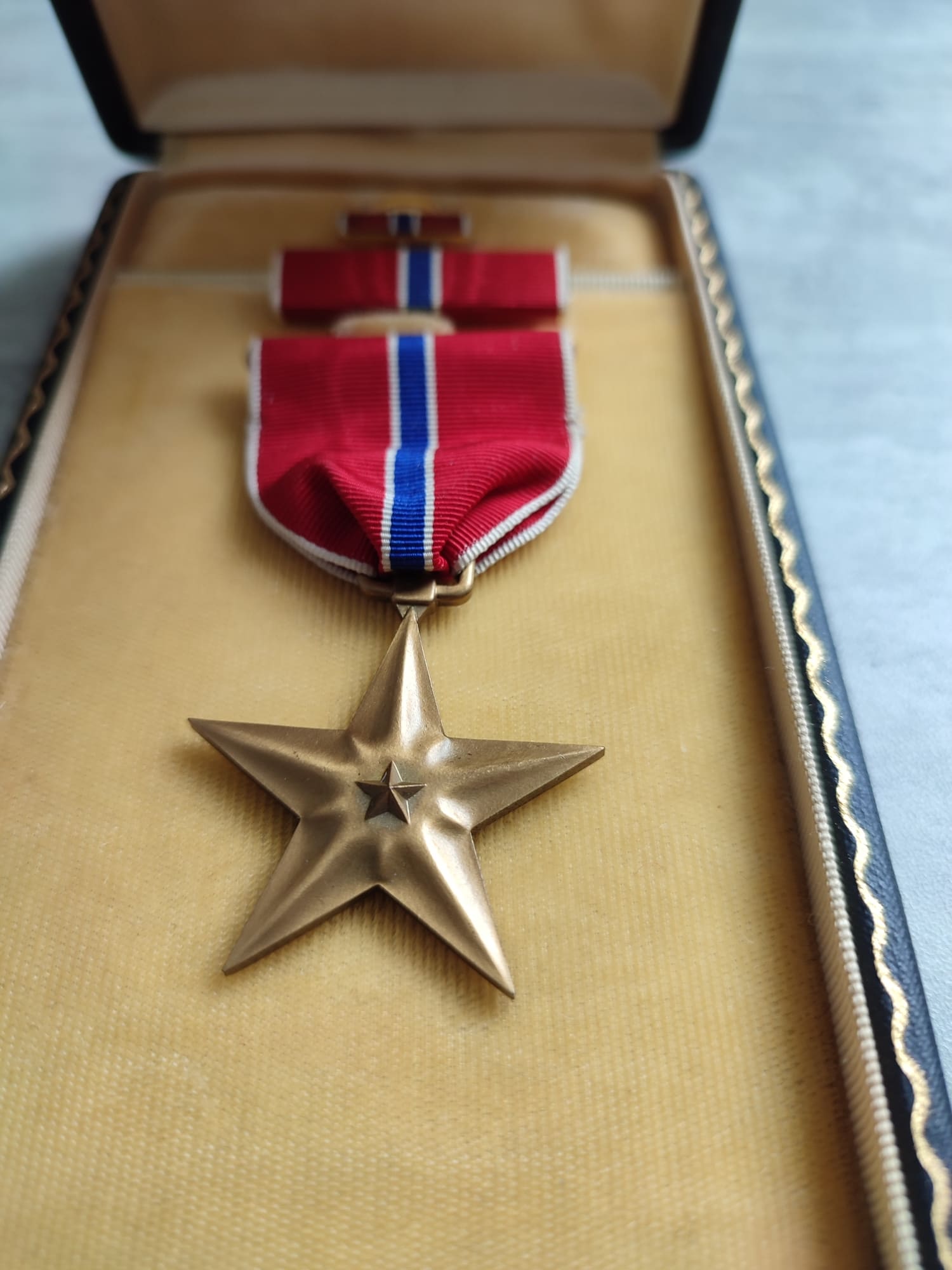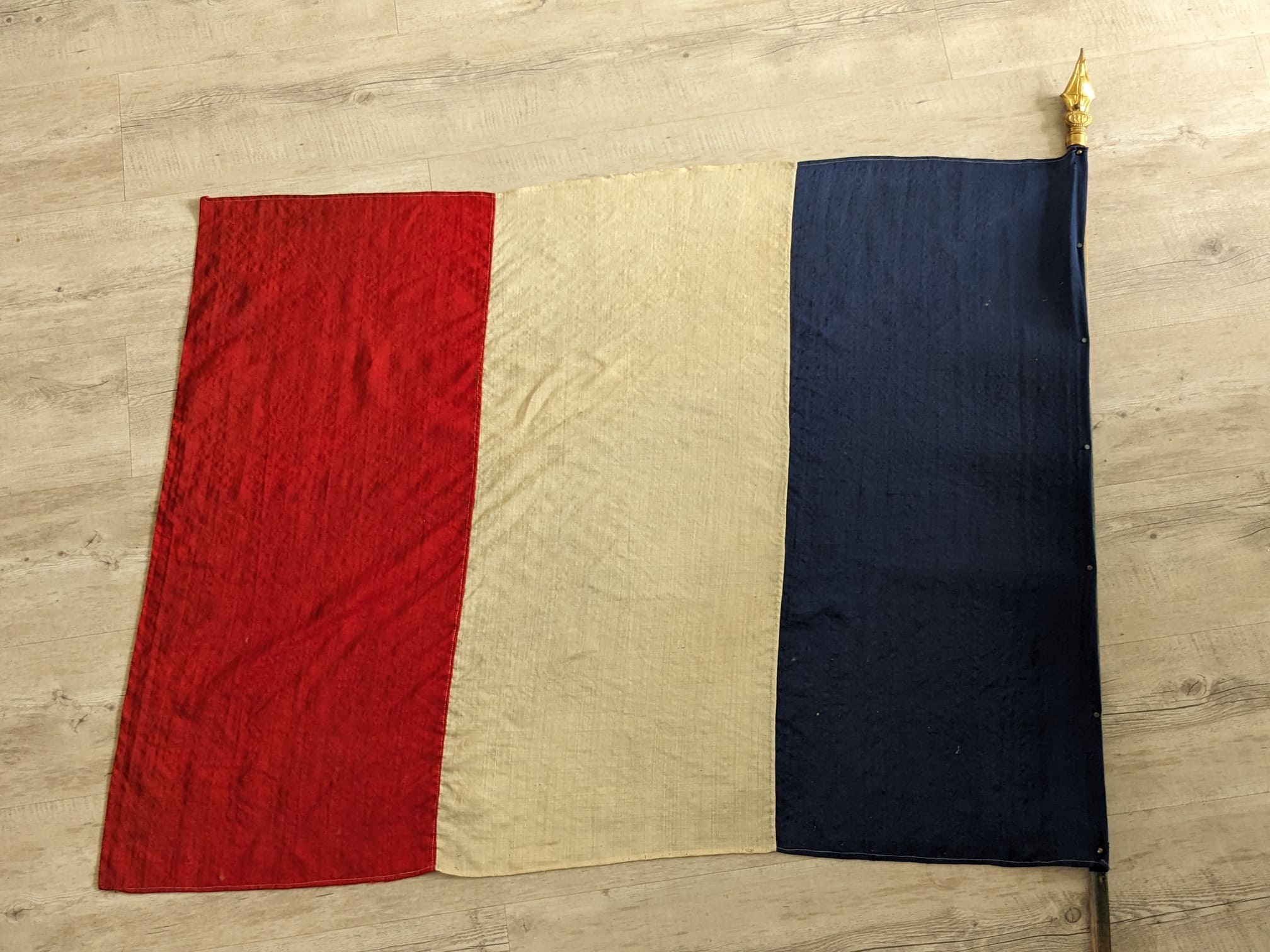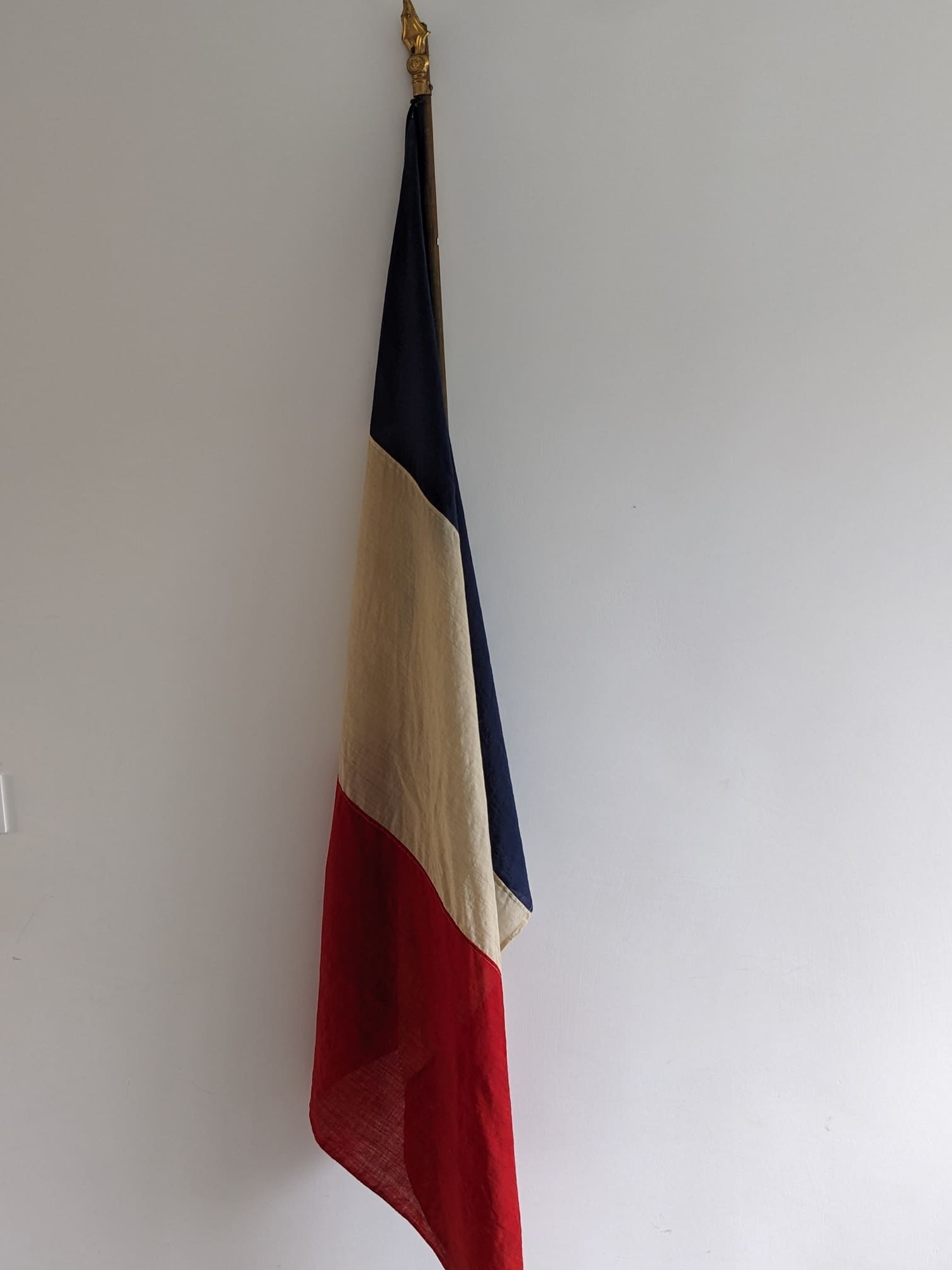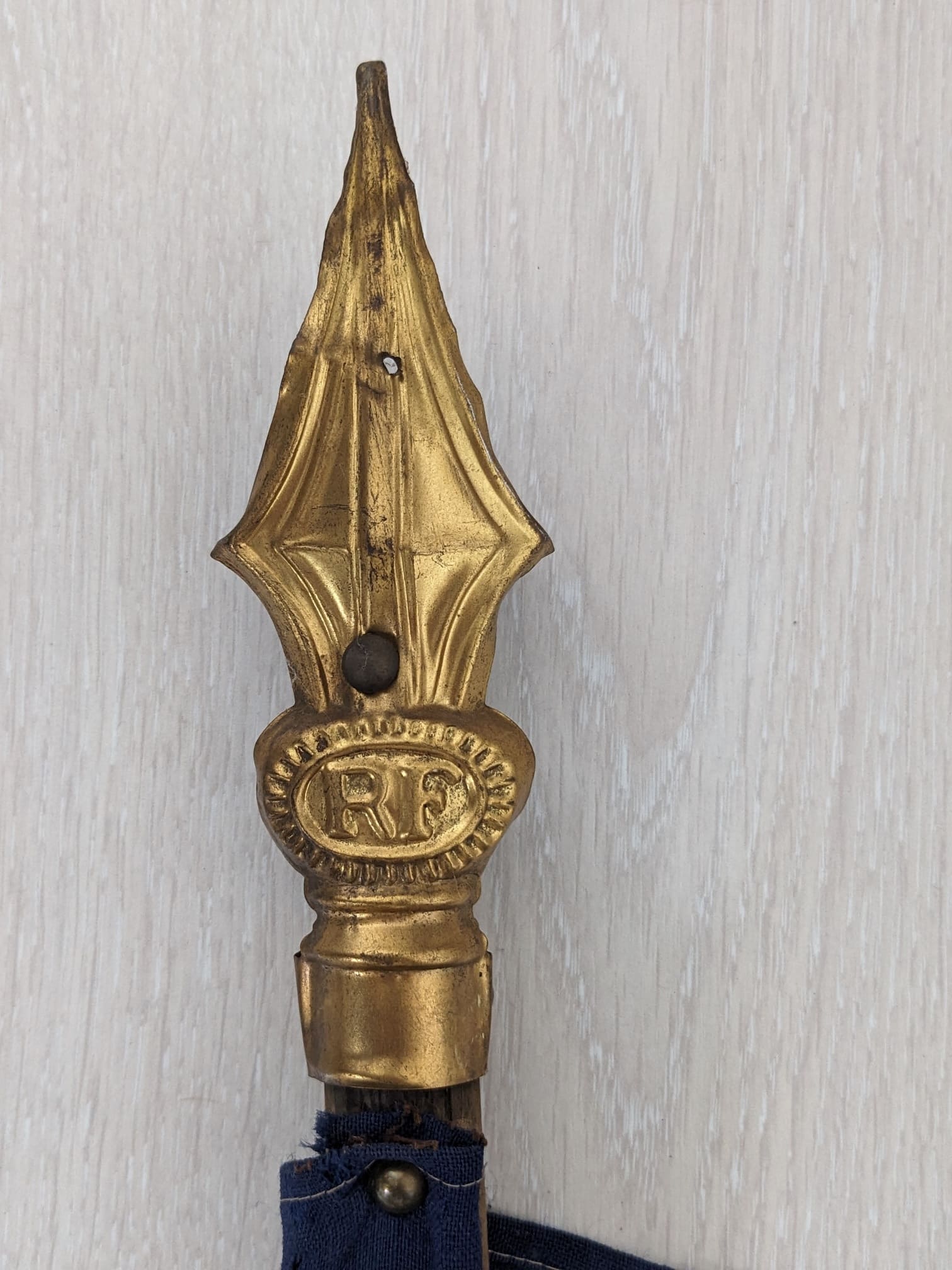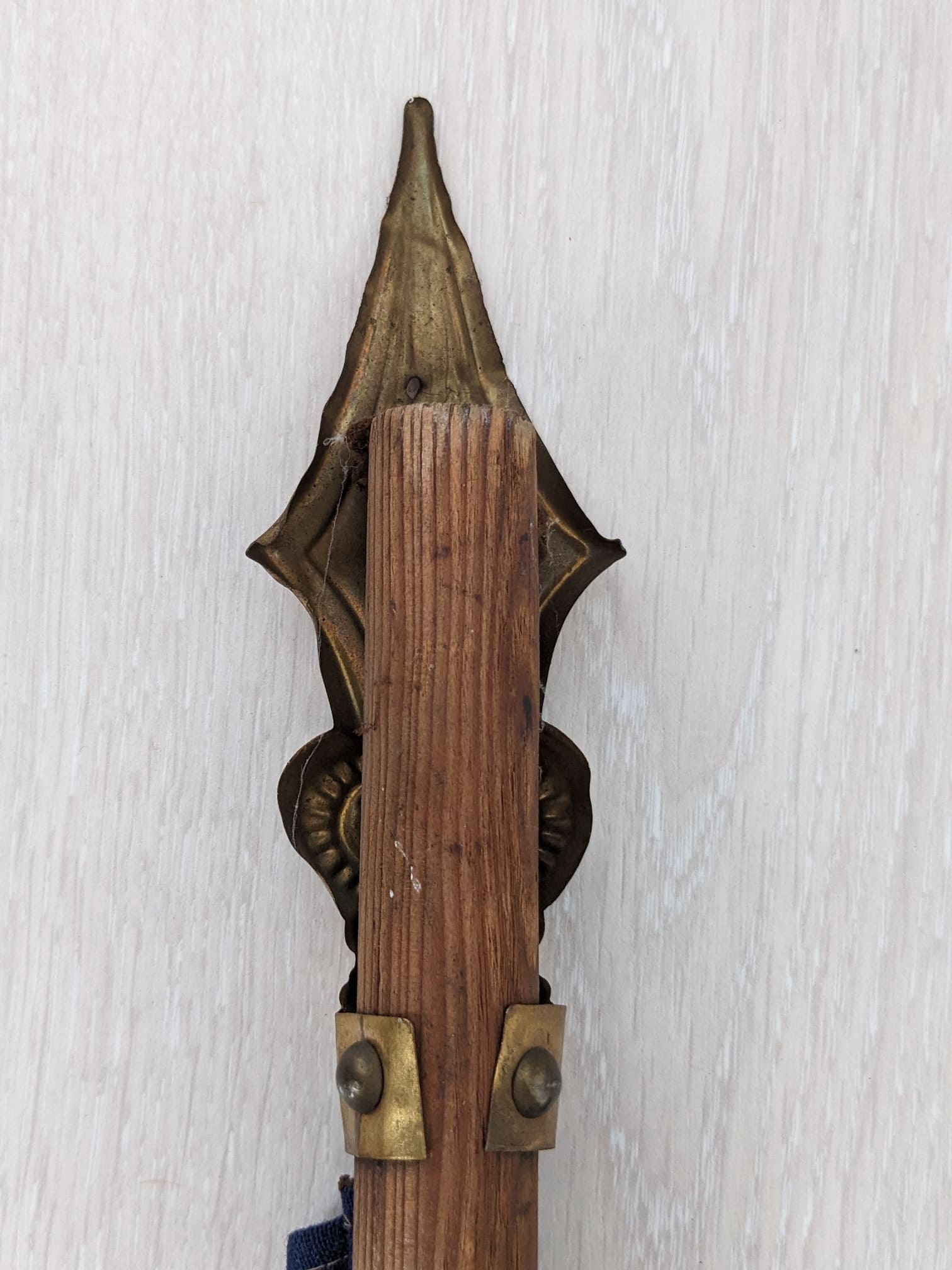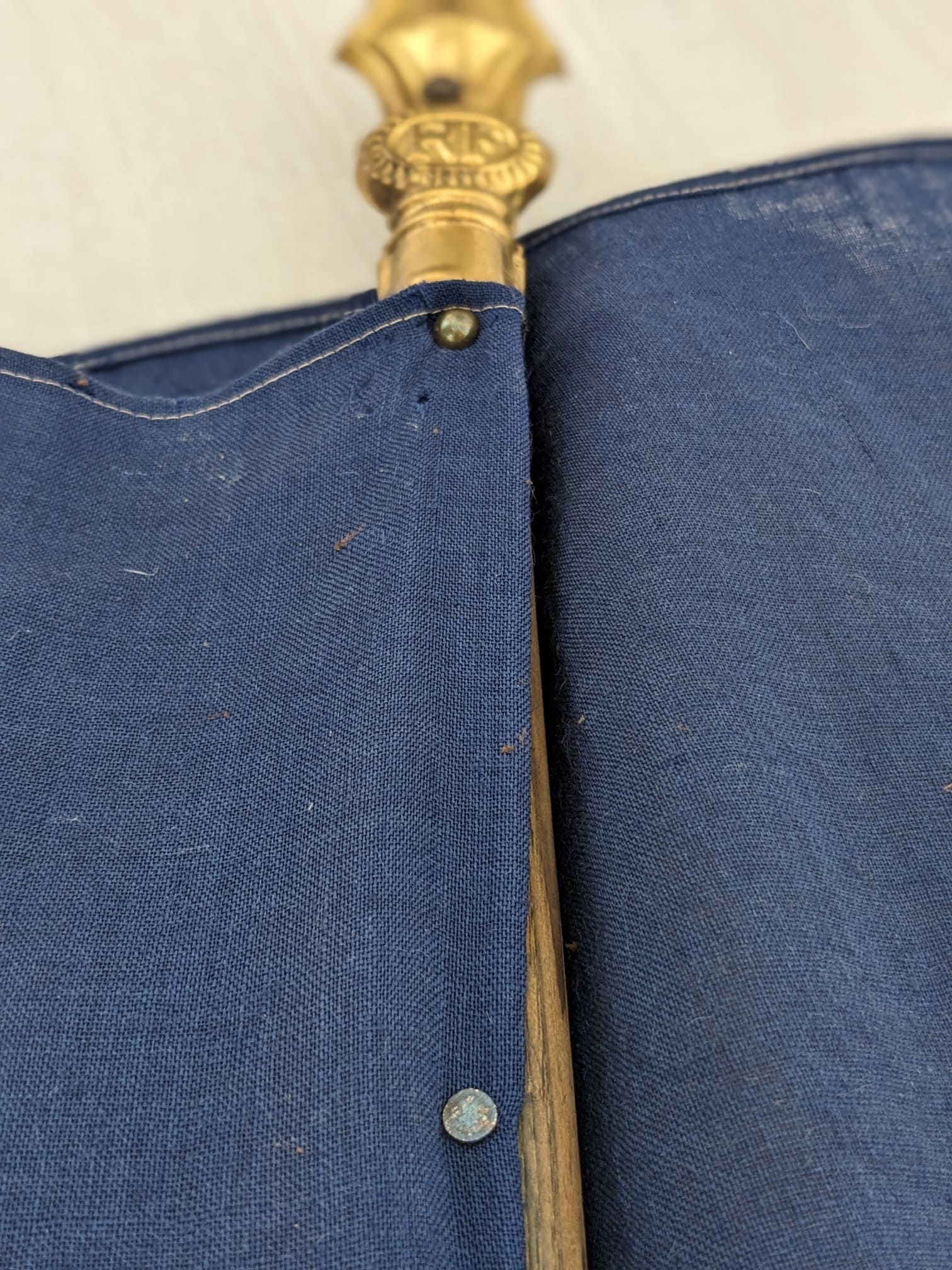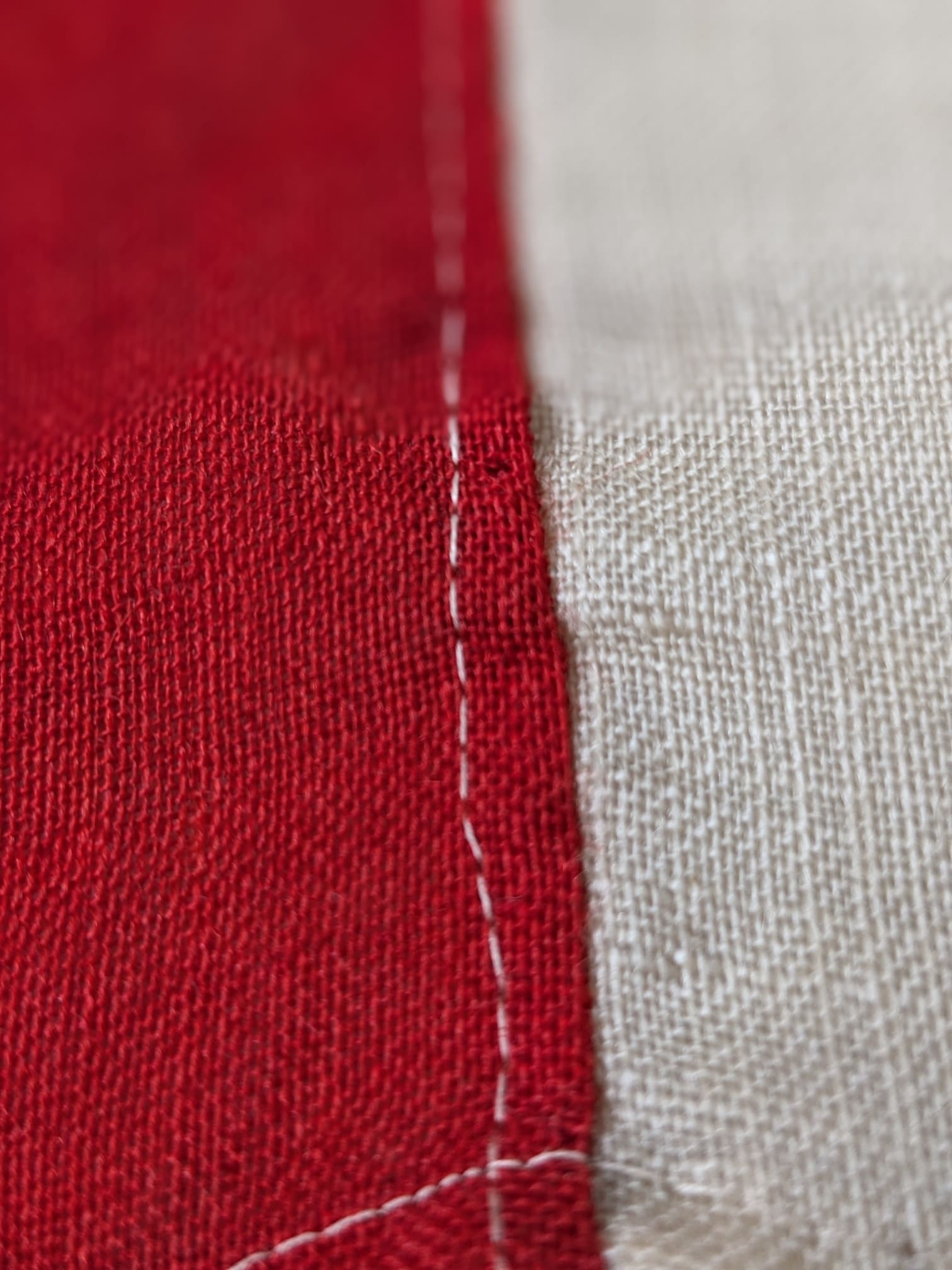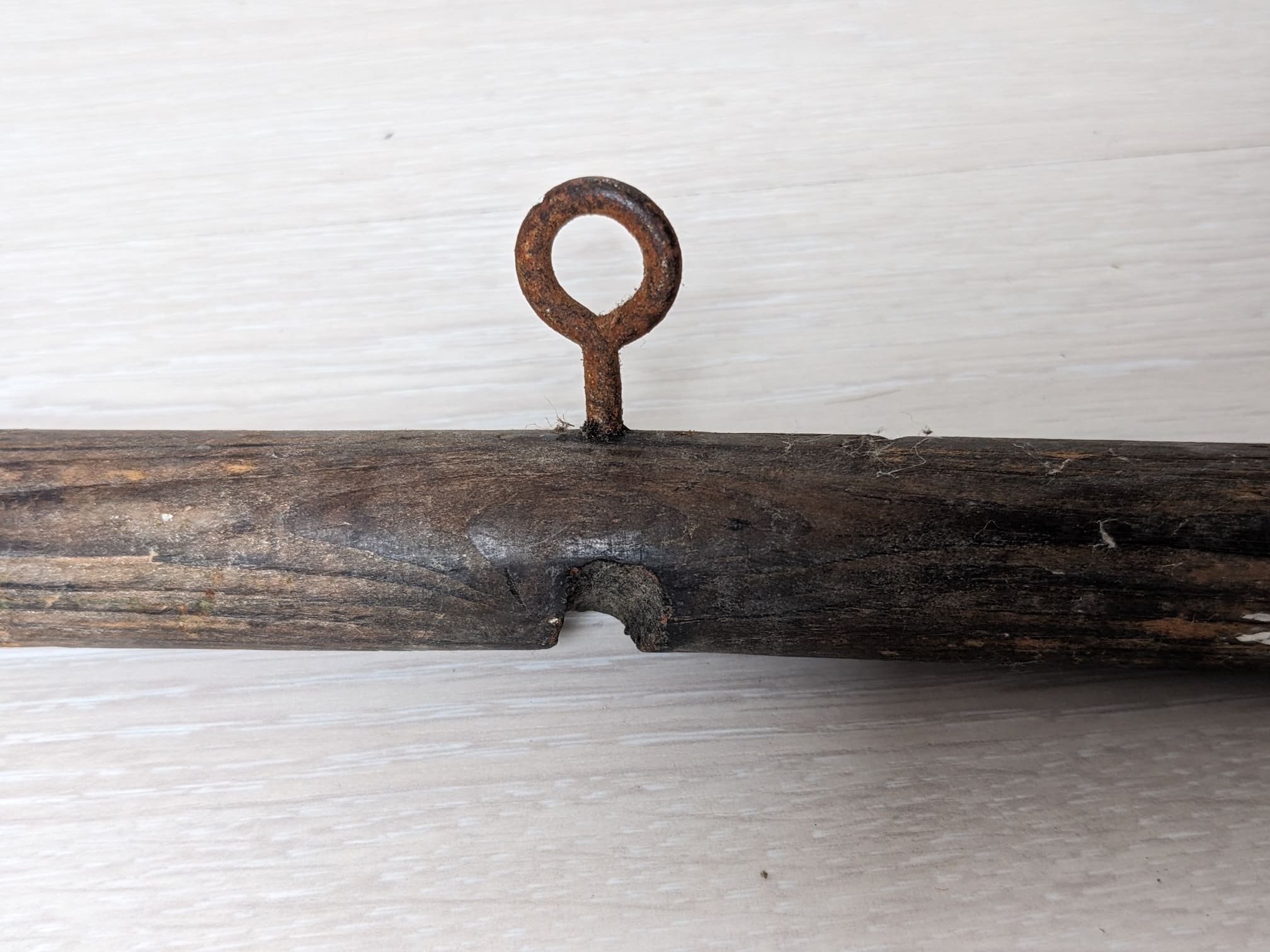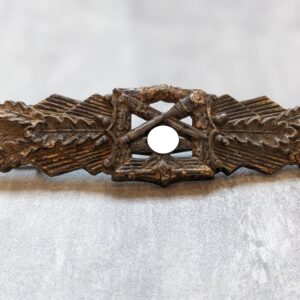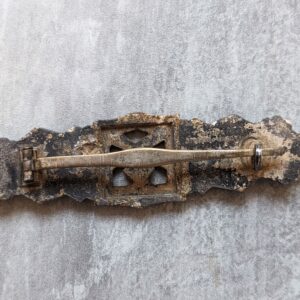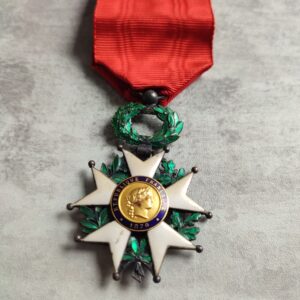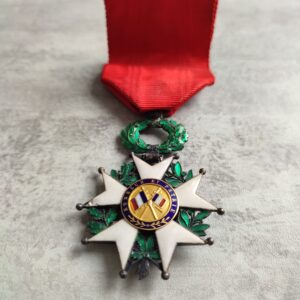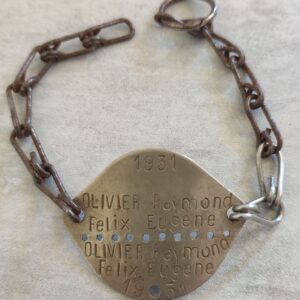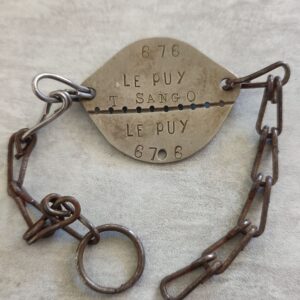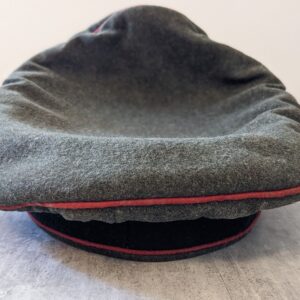French liberation Flag of Brest from World War II
Available, contact us
This rare handmade World War II liberation flag was created in haste by the French population and used during the liberation of Brest, France, to celebrate the arrival of the American and British Allied forces in September 1944 (four months after the Allied landings in Normandy).
While awaiting the Allied liberation of their city, many French citizens secretly made ‘liberation flags’ to welcome and thank them. Their improvised characteristics are almost limitless. The lack of specific knowledge about the flag itself, the shortage of time, and the scarcity of appropriate materials in a devastated region combined to produce a collection of flags where almost every example is unique and rare. French civilians caught making liberation flags during the German occupation were immediately executed.
What makes this Brest liberation flag exceptional is not only its provenance but also the fact that it is held by a wooden stick still attached with the original small nails driven into the fabric.</p
The flag is in fairly good condition with just a few moth holes.
Total height: 89,3 inches
Flag width: 50,8 inches
Flag height: 39 inches
LIBERATION OF BREST
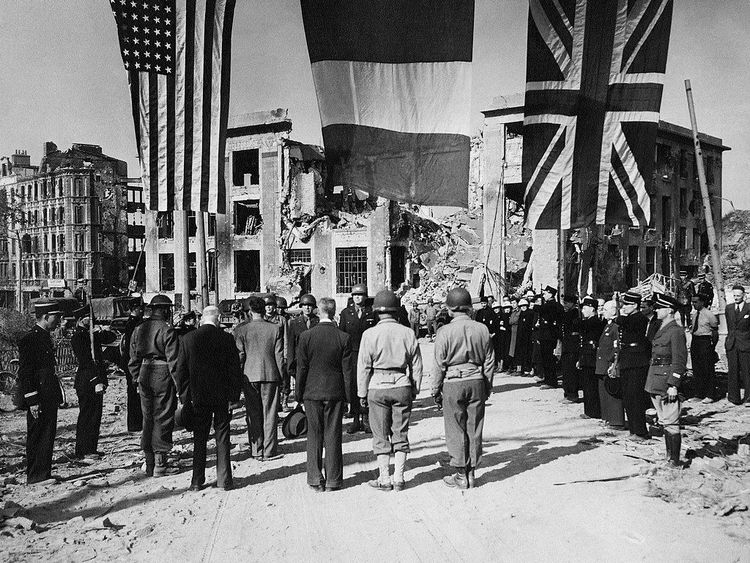
The liberation of Brest in 1944 was one of the most intense and destructive battles of the campaign to liberate France during World War II. Located in Finistère, Brittany, Brest was a crucial military port for the Germans, who used it as a submarine base for their U-boats. The city had been heavily fortified and was defended by nearly 40,000 German soldiers under the command of General Hermann Bernhard Ramcke.
Context and Preparation
After the Normandy landings on June 6, 1944, American and British Allied forces began advancing westward to liberate the French Atlantic ports. Brest was one of the main objectives, as the Allies needed ports to transport reinforcements and supplies. The 8th Infantry Division, commanded by General Troy H. Middleton, was tasked with the attack on Brest.
The Battle
The battle for the liberation of Brest began in mid-August 1944 and lasted for about a month. The Americans faced fierce resistance from the German forces. The city, heavily fortified, had numerous defenses, including bunkers, anti-aircraft guns, and minefields.
The fighting was intense, often house by house and street by street. The Americans used heavy artillery and air raids to try to dislodge the German defenders. However, the city’s topography and the Germans’ determination slowed their advance. The inhabitants of Brest suffered greatly during this period, as the city was largely destroyed by the bombings.
The Surrender
On September 18, 1944, after heavy losses on both sides and massive destruction of the city, German General Ramcke eventually surrendered with his troops. Brest was liberated, but the city was in ruins, and the port, which could have been of great use to the Allies, was virtually unusable due to the extensive damage. The Germans had systematically destroyed the port infrastructure before surrendering, making any immediate use of the port by the Allies impossible.
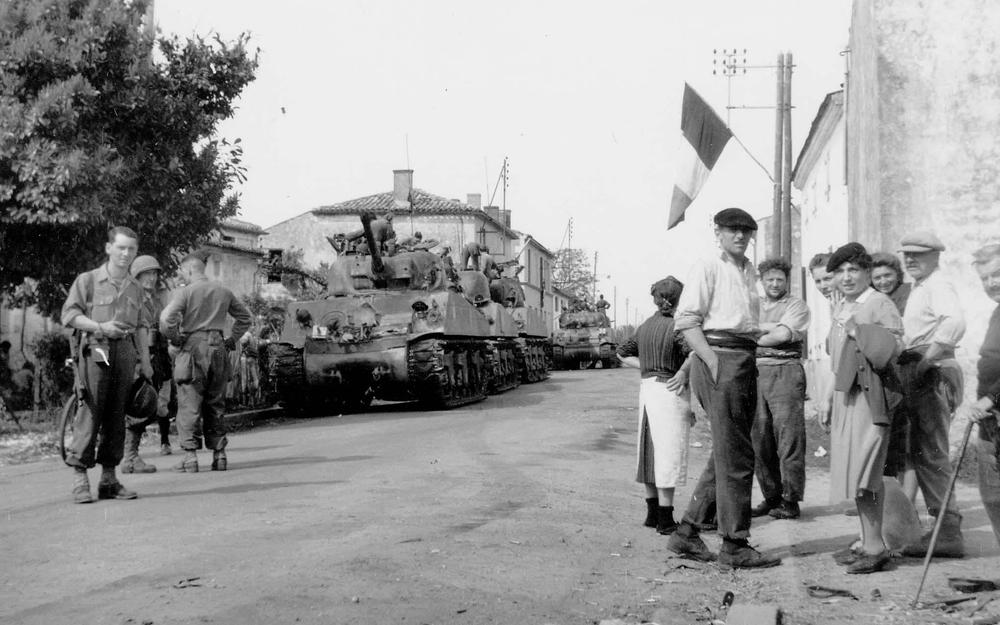
Consequences
The liberation of Brest was a strategic success for the Allies, but it came at a high cost in terms of human lives and material destruction. The city had to be almost entirely rebuilt after the war. However, the liberation of Brest also marked a turning point in the Western campaign, with German forces being pushed further away from the French Atlantic coast.
The Battle of Brest remains an example of the intense urban combat of World War II, illustrating the difficulty of retaking cities heavily defended by determined troops.
